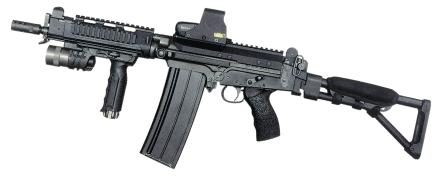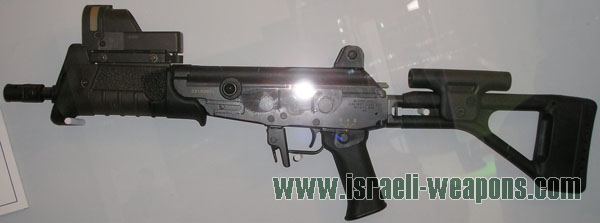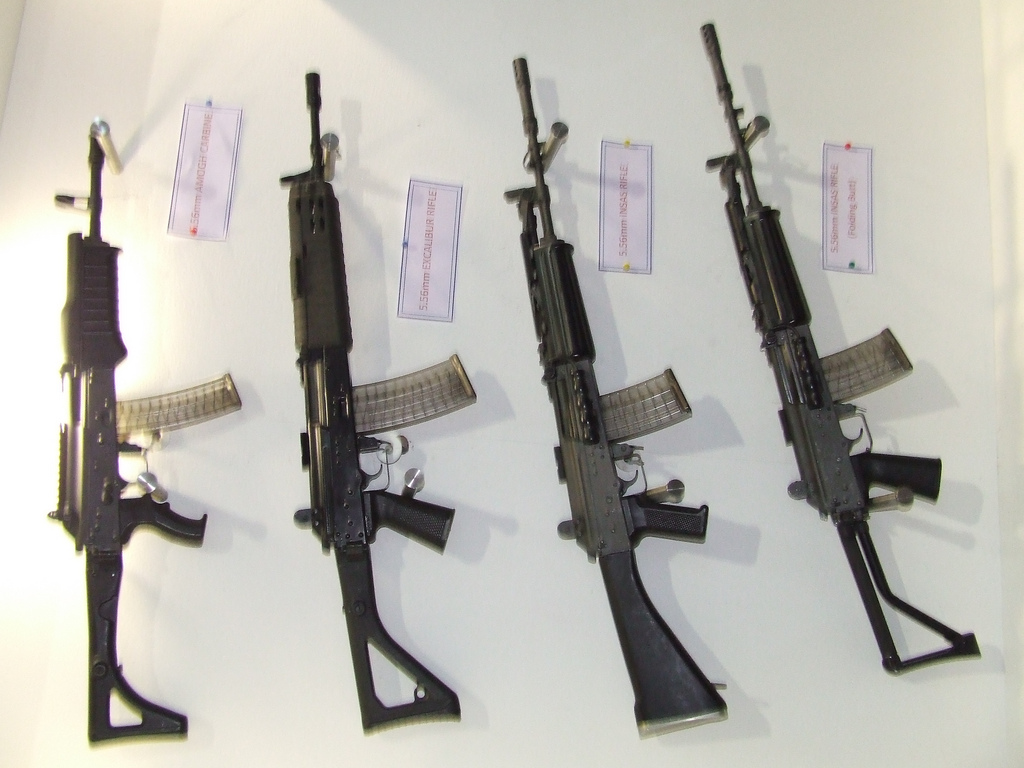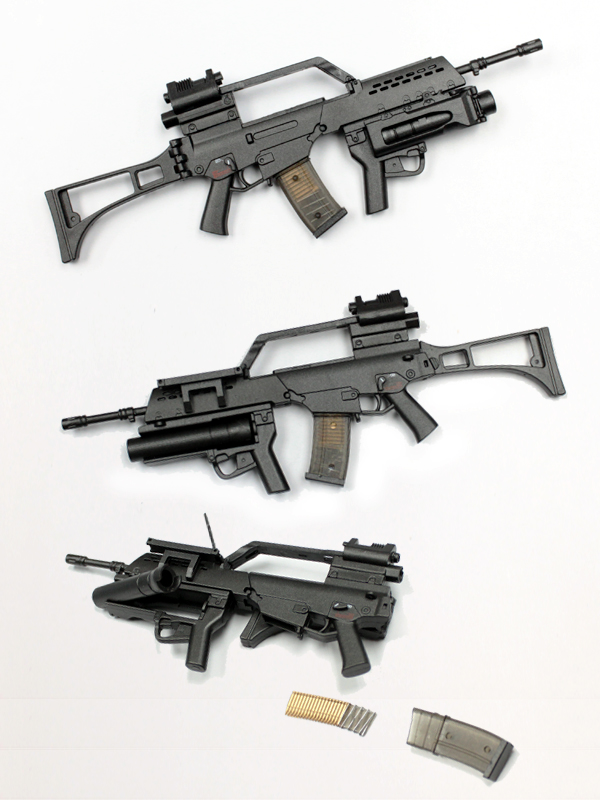MilSpec
ELITE MEMBER

- Joined
- Feb 19, 2011
- Messages
- 12,931
- Reaction score
- 38
- Country
- Location
Two Biggest Platforms
AR 15/M16 Variants
The AR-15 is a lightweight, 5.56 mm, magazine-fed, semi-automatic rifle, with a rotating-lock bolt, actuated by direct impingement gas operation or long/short stroke piston operation. It is manufactured with the extensive use of aluminum alloys and synthetic materials.

Specifications:
Action: Gas-operated, rotating bolt (direct impingement)
Prominent Calibers: 5.56 x 45 Nato/ .223 Rem
Popular Calibers: 5.56 nato, .22 LR, 7.62 X 39, 6.5mm Grendel, 6.8 mm Remington SPC, calibers
supported exist in the range of everything from .177HMR to .50 cal.
Operational Range: 600 yards
Rate of fire: 12–15 rounds/min sustained
45–60 rounds/min semi-automatic
700–950 rounds/min cyclic
Muzzle velocity: 715 m/s (2,350 ft/s)
Feed system: 30 round Stanag, 50/100 round drum bags, 50 round box mags.
Variants include but not limited to AR15 semi auto, M4 carbine, Colt M16, LWRC M6A1 Larue OBR, DPMS AR 15, Delton AR etc.
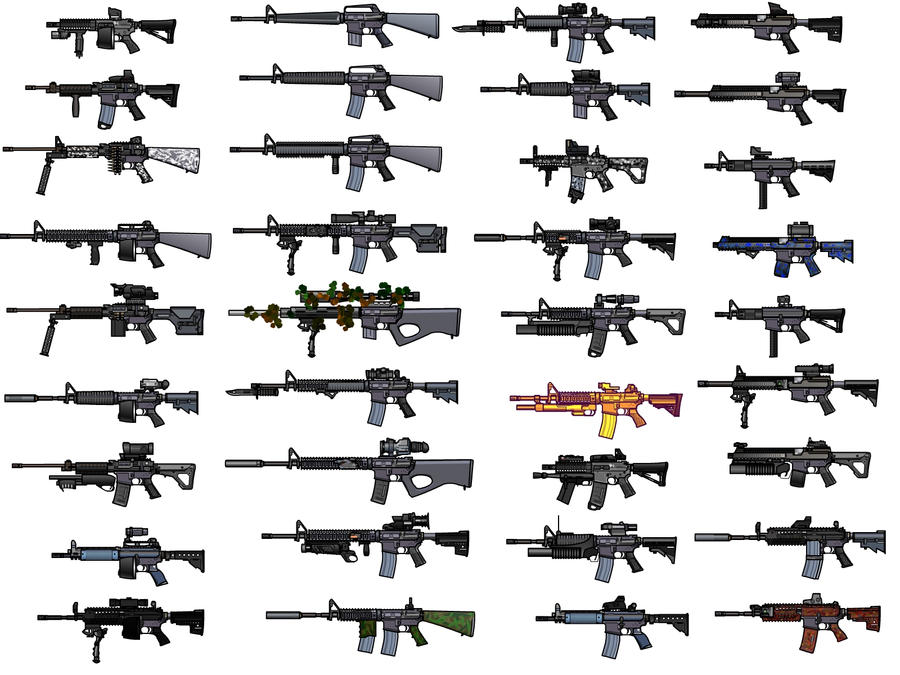
The Avtomat Kalashnikova of 1947
The innovation of the injured tank commander, Mikhail Kalashnikov became the go to gun for revolutionaries, mercenaries and armies all across the globe. Considered the most reliable firearm of all time, always associated to (but not limited to) the 7.62 x 39 mm cartridge, the gun has seen conflict in every part of the world.

Specifications:
Action: Gas-operated, rotating bolt
Rate of fire: Cyclic rate of fire is 600 rounds/min
Semi Auto : 40 rounds/ min
Muzzle velocity: 715 m/s (2,350 ft/s)
Effective range: 350 metres (380 yd)
Feed system: Standard magazine capacity is 30 rounds. There are also 10, 20, 40, 75, or 100-
round detachable box and drum style magazines
Variants: AK 47, AKM, AK74, AK-101/AK-102 series, AK-103/AK-104 series, AK-107/AK-108 series
AK-12, Saiga Shotgun, Saiga Hunting Semi auto varian, Wasr 10, Type 56 assault rifle, R4 assault rifle, RK 62, RK 95 TP, PM md. 63/65/86/90, Draco Pistol,
Derivatives
The basic design of the AK-47 has been used as the basis for other successful rifle designs such as the Finnish Rk 62/76 and Rk 95 Tp, the Israeli Galil, the Indian INSAS and the Yugoslav Zastava M76 and M77/82 rifles. Several bullpup designs have surfaced such as the Chinese Norinco Type 86S, although none have been produced in quantity. Bullpup conversions are also available commercially.

AR 15/M16 Variants
The AR-15 is a lightweight, 5.56 mm, magazine-fed, semi-automatic rifle, with a rotating-lock bolt, actuated by direct impingement gas operation or long/short stroke piston operation. It is manufactured with the extensive use of aluminum alloys and synthetic materials.

Specifications:
Action: Gas-operated, rotating bolt (direct impingement)
Prominent Calibers: 5.56 x 45 Nato/ .223 Rem
Popular Calibers: 5.56 nato, .22 LR, 7.62 X 39, 6.5mm Grendel, 6.8 mm Remington SPC, calibers
supported exist in the range of everything from .177HMR to .50 cal.
Operational Range: 600 yards
Rate of fire: 12–15 rounds/min sustained
45–60 rounds/min semi-automatic
700–950 rounds/min cyclic
Muzzle velocity: 715 m/s (2,350 ft/s)
Feed system: 30 round Stanag, 50/100 round drum bags, 50 round box mags.
Variants include but not limited to AR15 semi auto, M4 carbine, Colt M16, LWRC M6A1 Larue OBR, DPMS AR 15, Delton AR etc.

The Avtomat Kalashnikova of 1947
The innovation of the injured tank commander, Mikhail Kalashnikov became the go to gun for revolutionaries, mercenaries and armies all across the globe. Considered the most reliable firearm of all time, always associated to (but not limited to) the 7.62 x 39 mm cartridge, the gun has seen conflict in every part of the world.

Specifications:
Action: Gas-operated, rotating bolt
Rate of fire: Cyclic rate of fire is 600 rounds/min
Semi Auto : 40 rounds/ min
Muzzle velocity: 715 m/s (2,350 ft/s)
Effective range: 350 metres (380 yd)
Feed system: Standard magazine capacity is 30 rounds. There are also 10, 20, 40, 75, or 100-
round detachable box and drum style magazines
Variants: AK 47, AKM, AK74, AK-101/AK-102 series, AK-103/AK-104 series, AK-107/AK-108 series
AK-12, Saiga Shotgun, Saiga Hunting Semi auto varian, Wasr 10, Type 56 assault rifle, R4 assault rifle, RK 62, RK 95 TP, PM md. 63/65/86/90, Draco Pistol,
Derivatives
The basic design of the AK-47 has been used as the basis for other successful rifle designs such as the Finnish Rk 62/76 and Rk 95 Tp, the Israeli Galil, the Indian INSAS and the Yugoslav Zastava M76 and M77/82 rifles. Several bullpup designs have surfaced such as the Chinese Norinco Type 86S, although none have been produced in quantity. Bullpup conversions are also available commercially.





